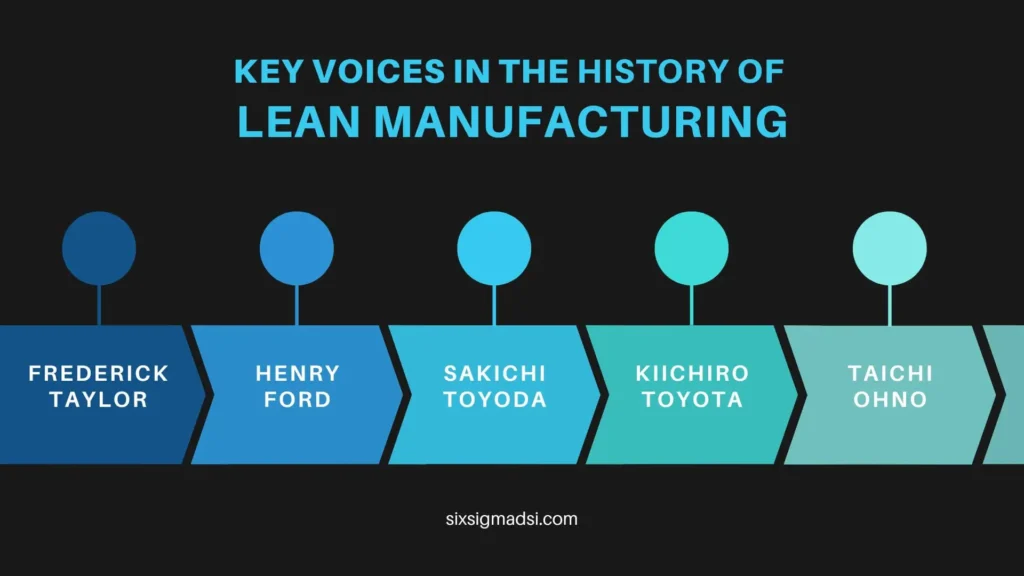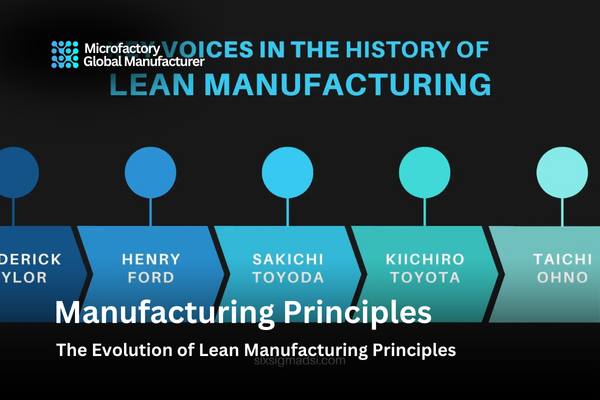Lean manufacturing principles have become the gold standard in the quest for efficiency and quality in production. Originating from the assembly lines of early 20th-century America and refined by Japanese innovation, these principles have reshaped industries worldwide. But how did this transformation unfold? And what lessons can we glean from this evolutionary journey?
Lean manufacturing isn’t just a set of tools and techniques; it’s a philosophy that emphasizes the relentless pursuit of waste reduction and continuous improvement. By understanding its origins and evolution, we can appreciate its profound impact on modern manufacturing and beyond.
The Origins of Lean Manufacturing
The Early Days: Craft Production
Before the rise of industrialization, production was a slow and meticulous process. Craftsmen created goods by hand, ensuring high quality but low volume. This artisanal approach had its charms, but as demand grew, it became clear that a more efficient method was needed.
The Advent of Mass Production
The early 20th century saw a seismic shift with the introduction of mass production. Henry Ford’s assembly line, introduced in 1913, revolutionized manufacturing. By breaking down tasks into simple, repetitive actions, Ford dramatically increased production speed and reduced costs. Yet, this system was not without its flaws. The rigid, one-size-fits-all approach often led to inefficiencies and wastage.
The Birth of Lean: Toyota’s Influence
Post-War Japan and the Need for Efficiency
After World War II, Japan faced significant economic challenges. Resources were scarce, and the country needed to rebuild its industries with limited means. Enter Toyota, a company that would change the manufacturing landscape forever.
The Toyota Production System (TPS)
Developed by Taiichi Ohno and Eiji Toyoda, the Toyota Production System (TPS) focused on eliminating waste, or “muda,” and optimizing every step of the production process. TPS introduced several key concepts that would become the foundation of lean manufacturing principles:
- Just-in-Time (JIT) Production: Producing only what is needed, when it is needed, to reduce inventory costs.
- Jidoka: Automation with a human touch, allowing machines to stop when a problem is detected, ensuring quality.
- Kaizen: Continuous improvement involving everyone in the organization, from the CEO to the assembly line worker.
Images of The Evolution of Lean Manufacturing Principles


The Evolution of Lean Manufacturing Principles
Lean Goes Global
By the late 20th century, the success of TPS caught the attention of manufacturers worldwide. Companies began to adopt and adapt these principles to suit their unique needs. This global diffusion of lean principles marked the next stage in their evolution.
The Lean Toolbox Expands
As lean principles spread, so did the development of new tools and methodologies. Here are some key additions to the lean toolbox:
- Value Stream Mapping: A visual tool for identifying waste and optimizing processes.
- 5S: A workplace organization method that promotes efficiency and safety through five steps: Sort, Set in order, Shine, Standardize, and Sustain.
- Kanban: A scheduling system that improves workflow and inventory management.
Lean and the Digital Revolution
The advent of digital technologies has further propelled the evolution of lean manufacturing principles. Industry 4.0, characterized by the integration of cyber-physical systems, the Internet of Things (IoT), and big data analytics, has opened new avenues for applying lean concepts.
Case Studies: Lean in Action
Toyota: The Pioneer
Toyota remains a beacon of lean manufacturing. Its commitment to continuous improvement and waste reduction has not only cemented its market position but also inspired countless other companies.
Nike: Lean in the Apparel Industry
Nike’s adoption of lean principles has streamlined its supply chain, reduced lead times, and improved product quality. By focusing on eliminating waste and engaging employees in continuous improvement, Nike has set a new standard in the apparel industry.
Healthcare: Lean Beyond Manufacturing
Lean principles are not confined to manufacturing. In healthcare, lean methodologies have improved patient care, reduced wait times, and optimized hospital operations. Hospitals around the world are now applying lean to enhance efficiency and patient satisfaction.
FAQs
What are the core principles of lean manufacturing?
Lean manufacturing principles revolve around waste reduction, continuous improvement, and enhancing value for the customer. Core principles include Just-in-Time (JIT) production, Jidoka (automation with a human touch), and Kaizen (continuous improvement).
How has technology impacted lean manufacturing?
Technology has significantly impacted lean manufacturing by enabling more precise data collection, real-time monitoring, and automation. Industry 4.0 technologies, such as IoT and big data analytics, have further enhanced the ability to identify and eliminate waste, optimize processes, and improve decision-making.
Can lean principles be applied outside of manufacturing?
Absolutely! Lean principles have been successfully applied in various sectors, including healthcare, software development, and services. Any process that involves a flow of activities can benefit from lean methodologies to reduce waste and improve efficiency.
What is the role of employees in lean manufacturing?
Employees play a crucial role in lean manufacturing. Their involvement in identifying problems, suggesting improvements, and implementing changes is essential for continuous improvement. Lean manufacturing fosters a culture of collaboration and empowerment, where every employee contributes to the organization’s success.
Conclusion
The evolution of lean manufacturing principles is a testament to the power of innovation and continuous improvement. From the early days of craft production to the high-tech world of Industry 4.0, lean has proven to be a dynamic and adaptable philosophy. Its emphasis on efficiency, waste reduction, and value creation has transformed industries and continues to shape the future of manufacturing.
As we move forward, the integration of digital technologies with lean principles promises even greater advancements. The journey of lean manufacturing is far from over, and its principles will undoubtedly continue to evolve, driving progress in ways we can’t yet imagine. Whether you’re a seasoned professional or a curious newcomer, understanding and applying lean principles can lead to remarkable improvements in any field.


